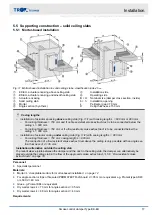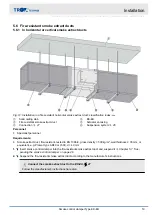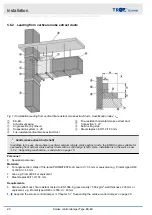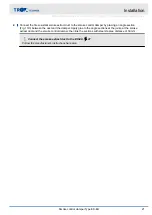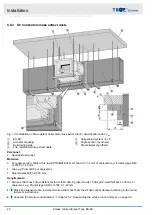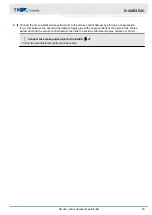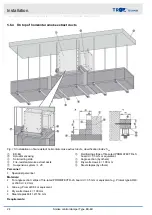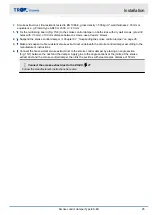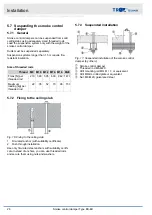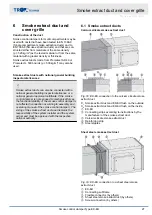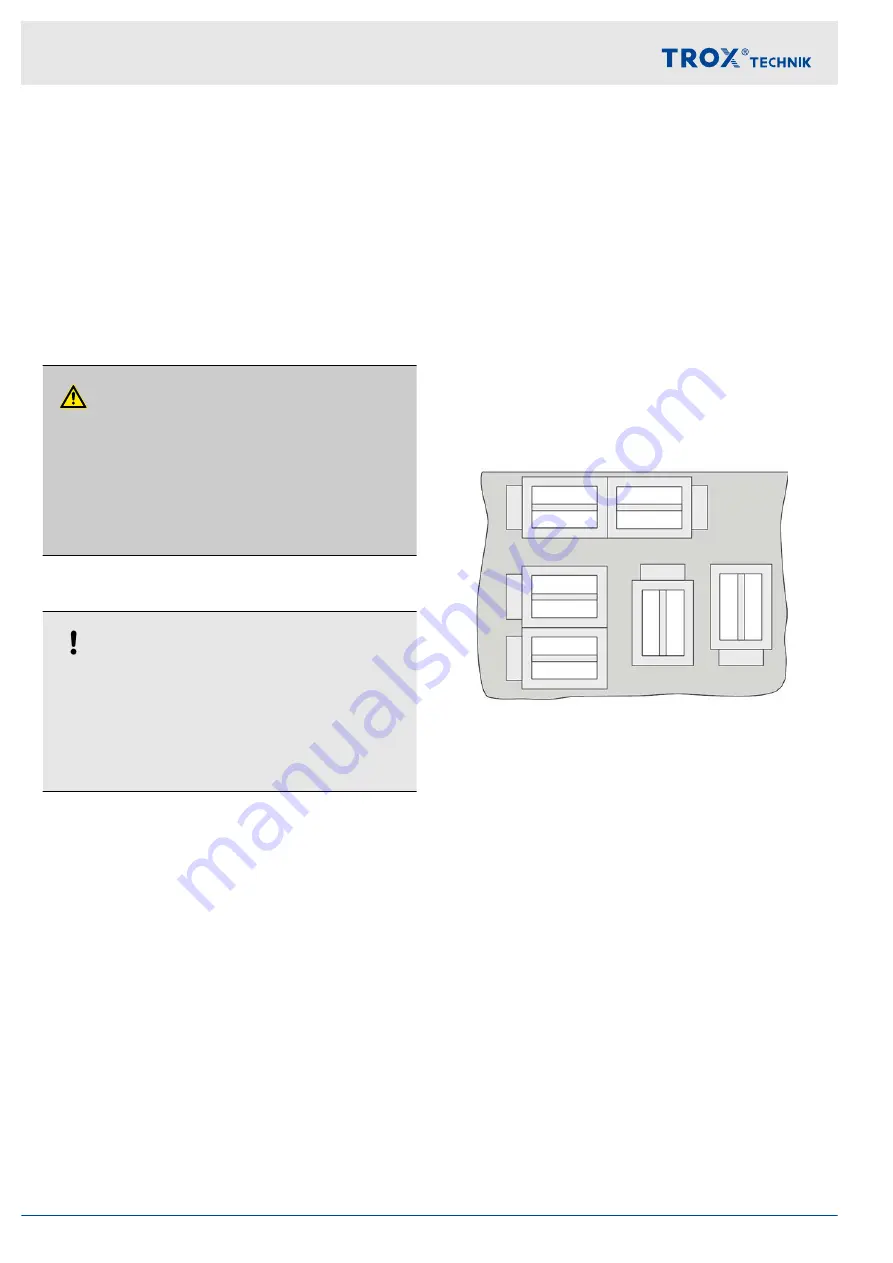
5
Installation
5.1 Installation situations
The overview of all possible installation types of the
smoke control damper EK-EU are listed in the declara-
tion of performance, these can be downloaded from the
TROX homepage.
5.2 Safety notes regarding installation
Sharp edges, sharp corners and thin sheet metal
parts
CAUTION!
Danger of injury from sharp edges, sharp cor-
ners and thin sheet metal parts!
Sharp edges, sharp corners and thin sheet metal
parts may cause cuts or grazes.
–
Be careful when carrying out any work.
–
Wear protective gloves, safety shoes and a hard
hat.
5.3 General installation information
NOTICE!
Be careful to not damage the smoke control
damper
–
Protect the smoke control damper from contami-
nation and damage.
–
Cover the flange openings and the actuator (e.g.
with plastic) to protect them from mortar and
dripping water.
Please note:
Smoke control damper and electric actuator
(encasing) must remain accessible for maintenance.
Make sure that no loads are imposed on the casing
as this may impair the function of the smoke control
damper.
Install the smoke control damper without torsion
(horizontal/vertical).
Mortar-based installation: The perimeter
gap »s« must be large enough so that mortar can be
filled in even in case of thicker walls.
5.3.1 Installation materials
Acceptable mortars for mortar-based installation
In case of mortar-based installation, the open spaces
between the fire damper casing and the wall or ceiling
slab must be closed off with mortar. Entrapped air is to
be avoided. The mortar bed depth should be equal to
the thickness of the wall but must be at least 100 mm.
The following mortars are acceptable:
DIN 1053: Groups II, IIa, III, IIIa; fire protection
mortar of groups II, III
EN 998-2: Classes M 2.5 to M 10 or fire protection
mortar of classes M 2.5 to M 10
Equivalent mortars that meet the requirements of
the above standards, gypsum mortar or concrete
5.3.2 Installation position
The smoke control damper can be installed so that the
damper blade shaft is horizontal or vertical. The position
of the actuator is not critical but it must remain acces-
sible for maintenance.
Fig. 5: Blade shaft horizontal or vertical
Installation
Installation situations > Installation position
Smoke control damper Type EK-EU
12
Содержание EK-EU
Страница 35: ...Smoke control damper Type EK EU 35...

















